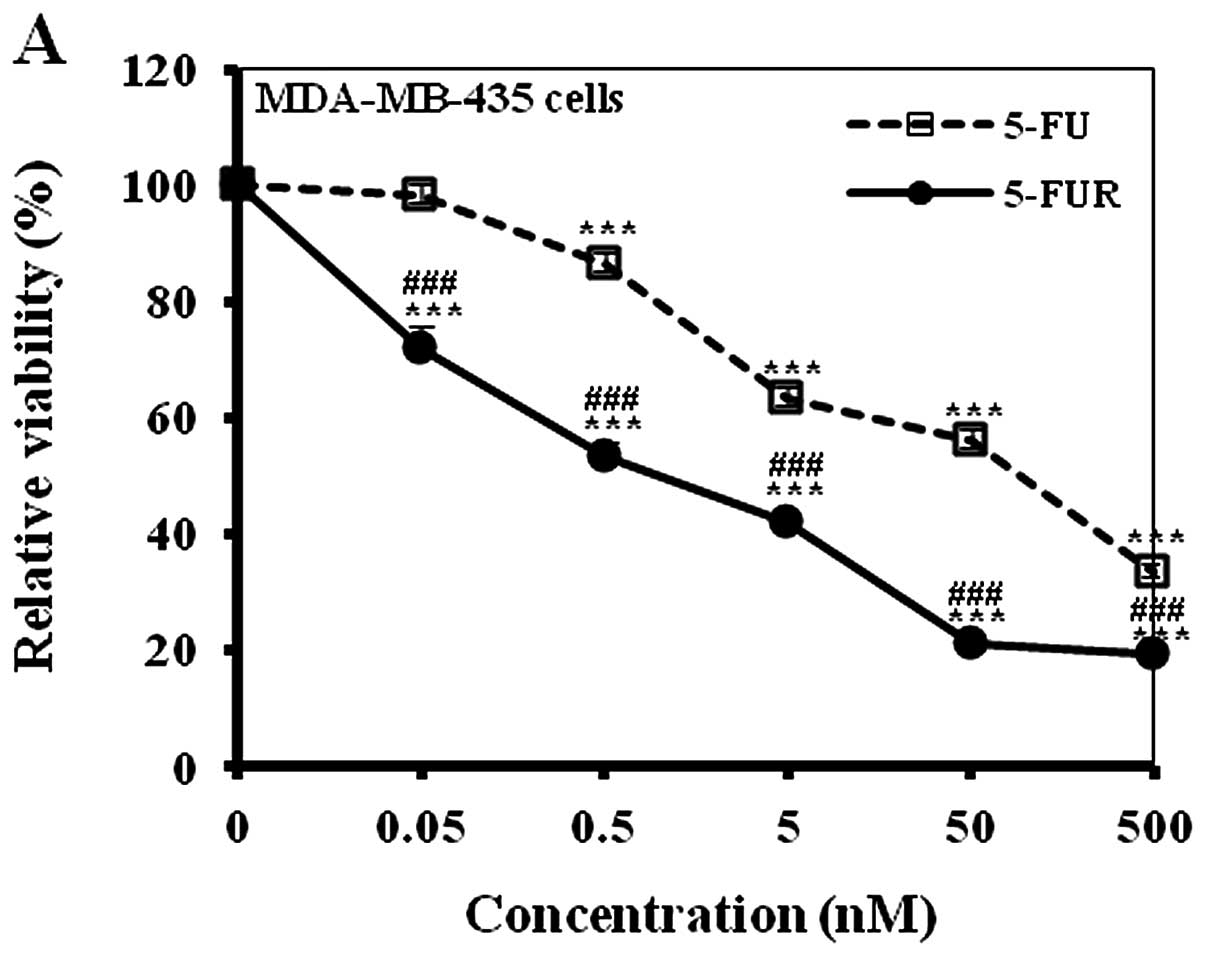Adenosine potentiates the therapeutic effects of neural stem cells expressing cytosine deaminase against metastatic brain tumors
- Authors:
- Published online on: July 3, 2013 https://doi.org/10.3892/or.2013.2584
- Pages: 1101-1106
Metrics:
Total
Views: 0 (Spandidos Publications: | PMC Statistics:
)
Total PDF Downloads: 0 (Spandidos Publications: | PMC Statistics:
)
Abstract
Tumor-tropic properties of neural stem cells (NSCs) provide a novel approach with which to deliver targeting therapeutic genes to brain tumors. Previously, we developed a therapeutic strategy against metastatic brain tumors using a human NSC line (F3) expressing cytosine deaminase (F3.CD). F3.CD converts systemically administered 5-fluorocytosine (5-FC), a blood-brain barrier permeable nontoxic prodrug, into the anticancer agent 5-fluorouracil (5-FU). In this study, we potentiated a therapeutic strategy of treatment with nucleosides in order to chemically facilitate the endogenous conversion of 5-FU to its toxic metabolite 5-FU ribonucleoside (5-FUR). In vitro, 5-FUR showed superior cytotoxic activity against MDA-MB-435 cancer cells when compared to 5-FU. Although adenosine had little cytotoxic activity, the addition of adenosine significantly potentiated the in vitro cytotoxicity of 5-FU. When MDA-MB‑435 cells were co-cultured with F3.CD cells, F3.CD cells and 5-FC inhibited the growth of MDA-MB-435 cells more significantly in the presence of adenosine. Facilitated 5-FUR production by F3.CD was confirmed by an HPLC analysis of the conditioned media derived from F3.CD cells treated with 5-FC and adenosine. In vivo systemic adenosine treatment also significantly potentiated the therapeutic effects of F3.CD cells and 5-FC in an MDA-MB-435 metastatic brain tumor model. Simple adenosine addition improved the antitumor activity of the NSCs carrying the therapeutic gene. Our results demonstrated an increased therapeutic potential, and thereby, clinical applicability of NSC-based gene therapy.















